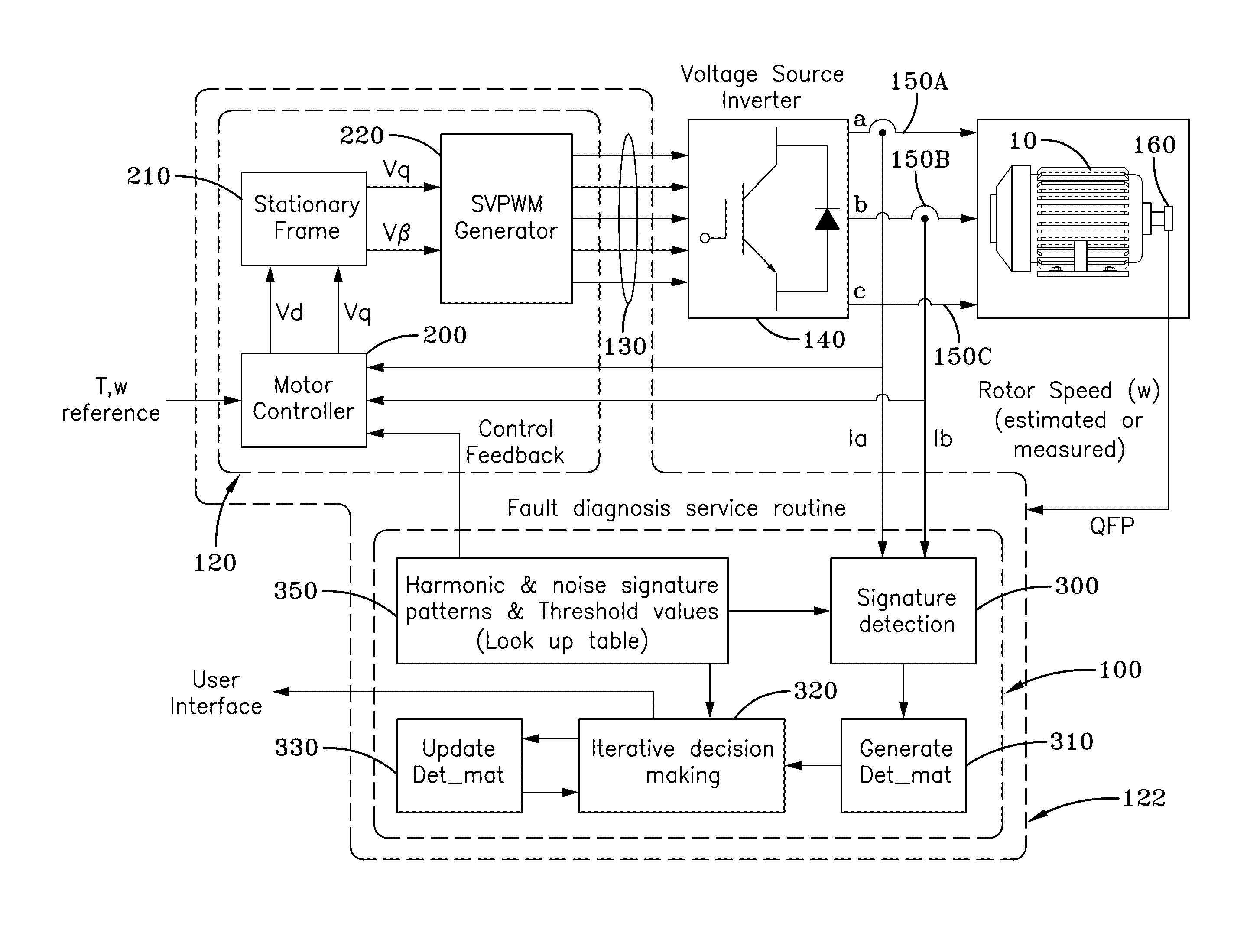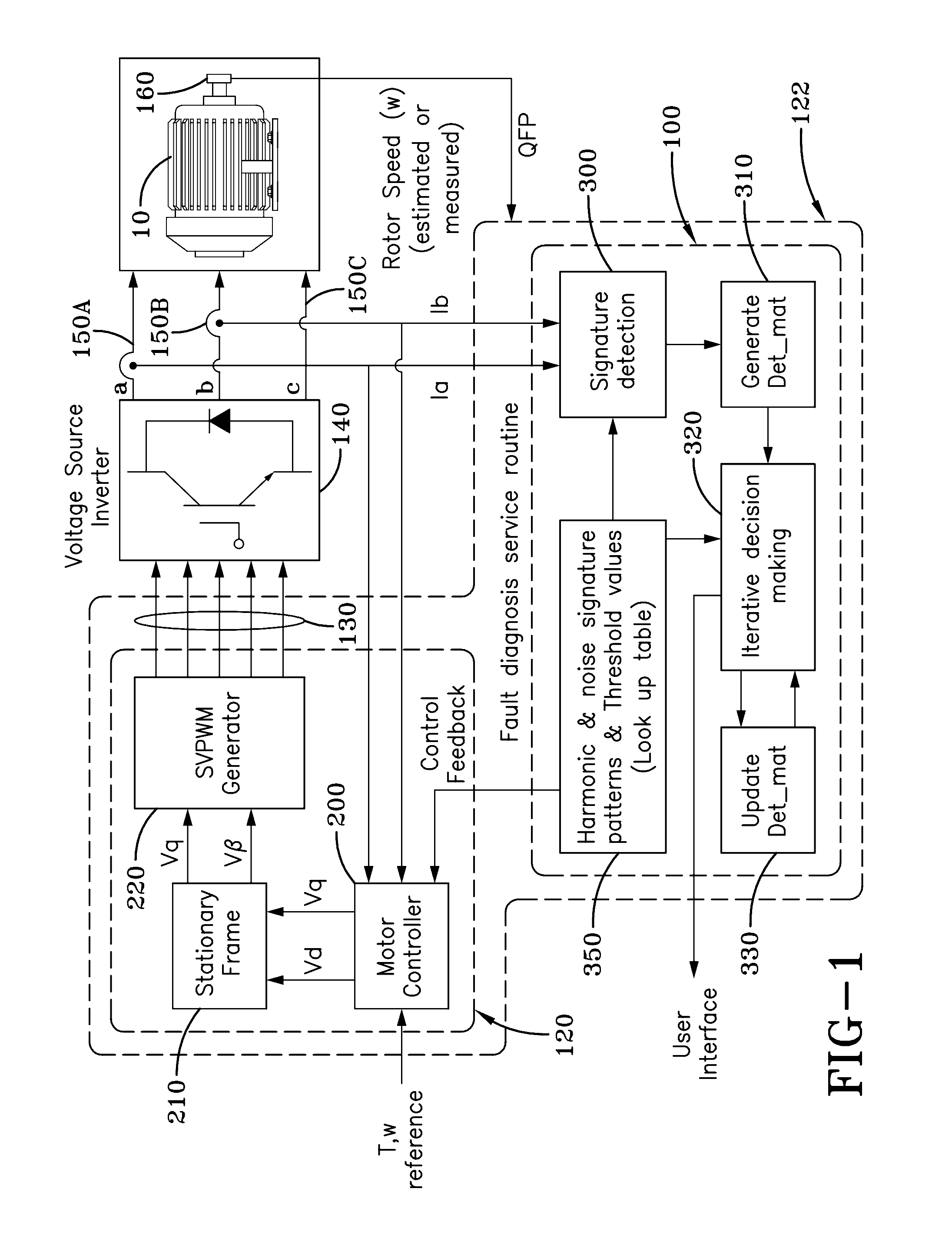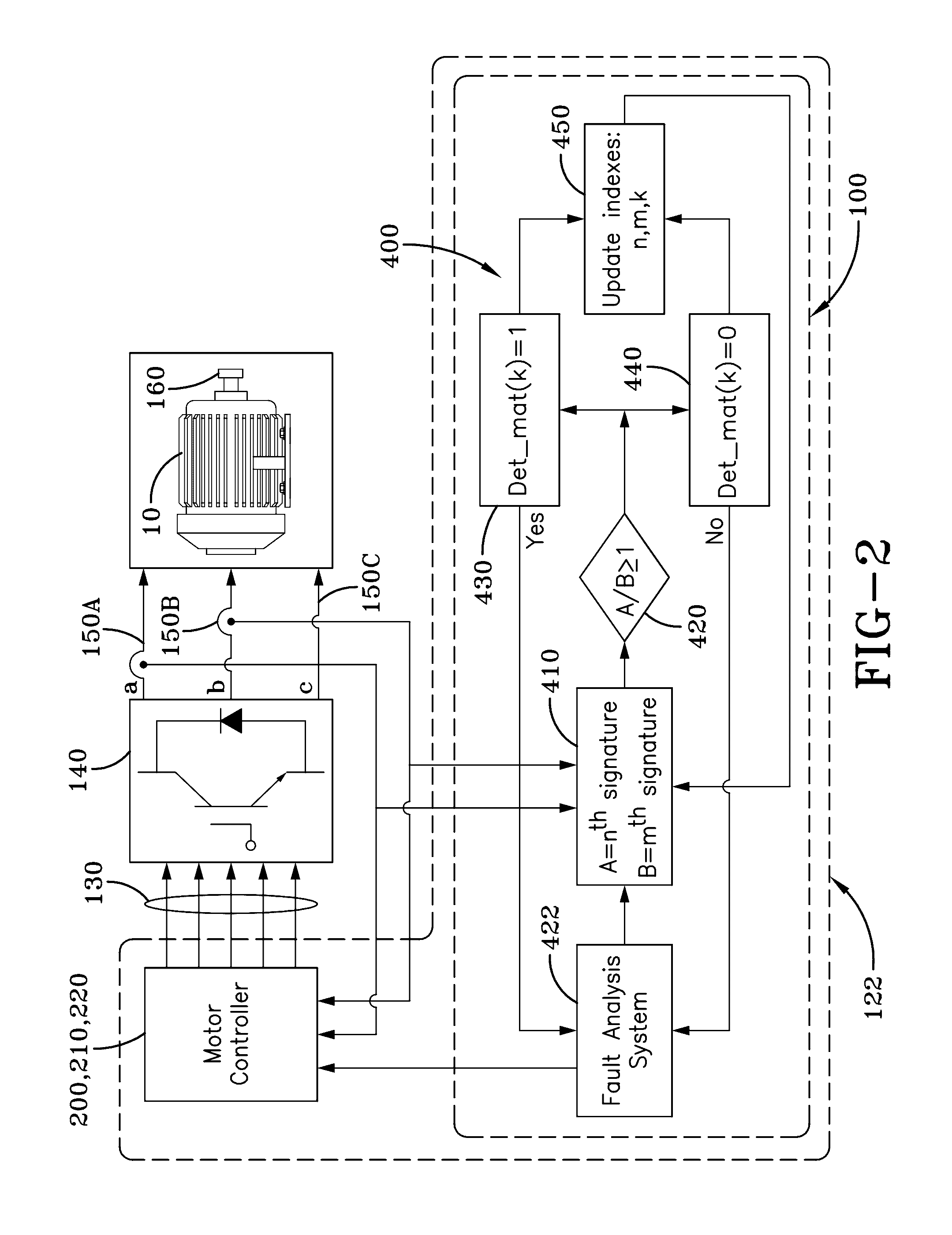System and method for iterative condition monitoring and fault diagnosis of electric machines
a technology of condition monitoring and fault diagnosis, applied in the field of motor current signature analysis (mcsa) processes, can solve the problems of large computation complexity requirements of diagnostic signal processing, large complexity and memory occupancy capacity, and the inherent vulnerability of the mcsa diagnosis process to noise and interferen
- Summary
- Abstract
- Description
- Claims
- Application Information
AI Technical Summary
Benefits of technology
Problems solved by technology
Method used
Image
Examples
Embodiment Construction
[0031]A system for iterative condition monitoring and fault diagnosis (i.e. condition monitoring system) of an electric machine 10, such as an electric motor or generator, is generally referred to by numeral 100, as shown in FIG. 1 of the drawings. It should be appreciated that the condition monitoring system 100 may be embedded in a digital signal processor (DSP) or any other suitable computing device. The condition monitoring system 100 to be discussed is configured to operate in conjunction with a motor control system 120 that is configured to generate and apply suitable motor control signals 130 to a voltage source inverter 140. The voltage source inverter 140 generates a three-phase power signal that is delivered via electrical lines 150A, 150B, and 150C to power the electric motor 10, so as to rotationally drive a shaft 160 provided thereby. It should be appreciated that the condition monitoring system 100 and motor control system 120 may be provided together or separately as ...
PUM
 Login to View More
Login to View More Abstract
Description
Claims
Application Information
 Login to View More
Login to View More - R&D
- Intellectual Property
- Life Sciences
- Materials
- Tech Scout
- Unparalleled Data Quality
- Higher Quality Content
- 60% Fewer Hallucinations
Browse by: Latest US Patents, China's latest patents, Technical Efficacy Thesaurus, Application Domain, Technology Topic, Popular Technical Reports.
© 2025 PatSnap. All rights reserved.Legal|Privacy policy|Modern Slavery Act Transparency Statement|Sitemap|About US| Contact US: help@patsnap.com



